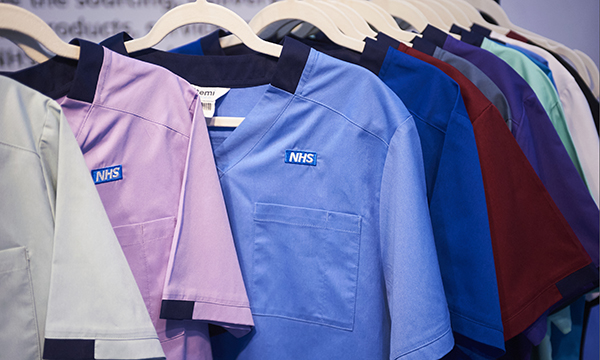Uniforms have always been more than just clothing in the medical field. They symbolize trust, professionalism, and a shared commitment to patient well-being. For staff within the NHS, uniforms serve both practical and symbolic purposes. They support everyday tasks, promote hygiene, and reinforce a sense of unity across diverse healthcare teams. As demands on healthcare professionals continue to grow, the importance of high-quality uniforms designed for function, comfort, and appearance has never been greater.
Meeting the Needs of Modern Healthcare
Healthcare professionals work in environments that require resilience, adaptability, and focus. Their uniforms must meet these same standards. From long shifts to physically demanding tasks, what staff wear plays a vital role in ensuring comfort and efficiency. A thoughtfully designed collection of uniforms helps create consistency across roles while catering to the unique needs of each professional.
Exploring a professional NHS work uniform collection allows staff to select garments that combine practical features with durability and style. This ensures that medical teams can perform at their best while maintaining a professional appearance.
Key Qualities of a Professional NHS Uniform
What defines a uniform as professional? While appearance is important, high-quality NHS uniforms are designed with several essential features in mind.
1. Comfort That Lasts All Day
Shifts in healthcare settings are often long and physically demanding. Uniforms crafted from breathable, soft fabrics provide comfort by regulating body temperature and reducing irritation. Fabrics such as cotton blends and performance textiles are particularly valued for their ability to balance durability with a lightweight feel.
2. Durability Under Pressure
NHS uniforms are exposed to frequent washing and demanding conditions. Strong fabrics with reinforced seams are crucial to maintaining the uniform’s integrity over time. A durable uniform ensures that staff maintain a neat, professional appearance without constantly replacing worn-out clothing.
3. Functional Features
Practicality is at the heart of medical workwear. Pockets, side vents, and well-structured fits are designed to make daily routines more manageable. Carrying essentials like pens, ID badges, or medical tools should not interfere with mobility or comfort, and a good uniform supports this balance.
4. Professional Presentation
Uniforms influence how staff are perceived. A clean, well-fitting uniform communicates competence, professionalism, and attention to detail. For patients, this visual reassurance can build trust, especially in stressful or uncertain situations.
Why Uniforms Influence Confidence and Performance
A uniform has the power to affect how professionals feel during their workday. When staff wear attire that is both comfortable and well-designed, it improves focus and confidence. Instead of worrying about restrictive fabrics or ill-fitting garments, attention remains on patient care.
Confidence in appearance also plays a role in patient interactions. A staff member dressed in a smart, professional uniform projects reliability and reassurance. This creates an environment where patients feel secure, supported, and respected.
The Importance of Consistency Across Teams
Uniforms create unity within NHS settings by establishing consistency across staff roles. Whether in hospitals, clinics, or community services, standardized uniforms help patients easily identify medical professionals. This clarity is particularly valuable in emergency situations, where recognizing staff quickly is essential.
Consistency also fosters teamwork. When professionals wear coordinated uniforms, it emphasizes shared responsibility and equality within the healthcare environment, reinforcing the idea of working together toward a common goal.
Practical Benefits of Online Access to NHS Uniforms
Healthcare staff today benefit from the convenience of online shopping, where uniforms can be explored and purchased with ease. Instead of relying on limited local options, online collections provide a wider variety of styles, fits, and sizes tailored to professional needs.
Clear descriptions, sizing guides, and product images make online selection simple. This ensures staff can choose uniforms that meet workplace requirements while also accommodating individual comfort and preference.
Maintaining the Quality of NHS Uniforms
To ensure uniforms remain functional and professional over time, proper care is essential. Given their frequent use and exposure to demanding environments, following correct laundering practices can extend their lifespan. Recommended care tips include:
- Washing uniforms in warm water with mild detergents to preserve fabric quality.
- Avoiding harsh chemicals that may damage fibers or fade colors.
- Using low-heat drying methods to prevent shrinkage.
- Keeping uniforms neatly folded or hung to maintain a crisp appearance.
These steps not only extend the life of NHS uniforms but also ensure that staff always present themselves in a professional manner.
Innovation and the Future of Healthcare Uniforms
Healthcare uniforms are evolving alongside advancements in the medical field. Innovations such as antimicrobial fabrics, moisture-control technology, and sustainable textiles are becoming increasingly common. These features enhance hygiene, support staff comfort, and align with growing sustainability goals in the healthcare sector.
The future of NHS uniforms will likely see greater integration of performance-focused fabrics and eco-friendly production methods. This ongoing evolution reflects the commitment to supporting both staff well-being and environmental responsibility.
Final Thoughts
Uniforms are a vital part of healthcare—they provide comfort, functionality, and a sense of identity while also shaping patient perceptions. A professional NHS work uniform collection ensures that staff have access to attire designed for the demands of their role. These uniforms combine durability, practicality, and professionalism, empowering healthcare workers to focus on what matters most: delivering excellent care.
By investing in uniforms that support both performance and presentation, healthcare teams strengthen not only their own confidence but also the trust and reassurance felt by the patients they serve.



